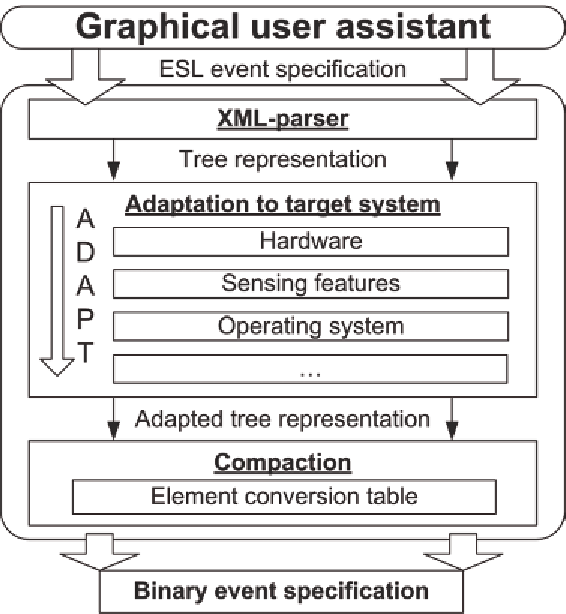Information Technology Reference
In-Depth Information
Figure 5. Architecture of the ESL event specification generator
exemplary fire detection scenario, while using
the simulator OMNeT++ with an upgrade for
WSNs as the target platform. The generation of
binary event specifications for other platforms
consequently follows the same scheme but may
of course require other customization.
on the sensor nodes. In the example scenario,
the variables
carbon monoxide
,
temperature
and
smoke
are mapped into
CO
,
T
and
S
respectively.
Besides different identifiers, assigned constants
(thresholds) are converted into those matching
the target platform, e.g., equal sensing capabili-
ties may be measured by different sensors with
varying physical units. For example, temperature
values given in Kelvin are converted to centi-
grade or time data is converted from minutes to
milliseconds if necessary. In the given scenario,
the thresholds for temperature and smoke read-
ings need to be aligned. Since the temperature
readings in the simulations are measured in cen-
tigrade, the threshold of 353 Kelvin is converted
to 80 centigrade. Similar to that, the threshold
for smoke readings is changed from 1.1 percent
to 11 per mille. As another important gain of this
Adaptation to Target Sensor Platform
Event specifications are first parsed into an in-
memory representation of the XML-tree. The
following describes the customization process
for meeting the requirements of the target sensor
platform. Therefore, the implementation of the
hardware abstraction layer interface is used. First,
constants and variables are adjusted. The names
of variables, which identify sensing capabilities,
are modified to internal identifiers as being used

Search WWH ::

Custom Search